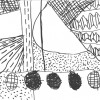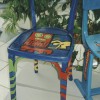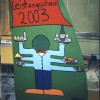-
Recent Lessons
- Keith Haring Murals in San Sebastián
- Keith Haring Murals
- Come To Know Keith Haring
- Organ Systems Mural
- City as Canvas: Artist Spotlight
- Printing with Objects
- Mural Making in the Style Of Keith Haring
- Subway Graffiti Project
- T-shirt Designer
- Keith Haring Semiotics Poster
- Introducing Keith Haring
- Discovering Keith Haring
- Haring Inspired Mural
- All Bottled Up!
- Thinking about Drawings as Symbols
More Resources
Recent Comments
- Daniel Wiener on Symbols & Signs
- Victoria E Sylvestre on Symbols & Signs
- Emoji: Modern Symbol Communication | OH THE ART PLACES WE CAN GO on Thinking about Drawings as Symbols
- coco on Keith Haring Biography
- Crack is Wack II | Muros hablados on Studying Mural: “Crack is Wack”
Subject: Painting
Lines: Invisible Journeys

THIS LESSON USES THE NYC BLUEPRINT LEARNING STANDARDS.
This lesson is part one of a three lesson unit designed to teach young students (first or second grade) about various types of line, and texture. This lesson places emphasis on the movement students use to create lines by having them create visual roadmaps and follow them with gesture. The magic of their gesture will be reinforced as their invisible journeys are revealed to them through the technique of wax resist.
Many Chairs, One Table

When a college student combines her studies in Art Education with a local high school, a large-scale sculptural work becomes the centerpiece.
Hip Hop Dancers
New York City High school students explore movement and performance in this lesson, which explores urban vernacular dance.
A Haring Production

This 7th grade class designed a stage set for their local job convention. Using Haring's bold and colorful style, they created emblems of various different occupations on large, free standing wood boards that were placed around the stage.
A Picture is Worth a Thousand Words
After being introduced to selected pieces of Keith Haring's work, students brainstormed for words and concepts that they wished to illustrate in a Haring-esque style. Attention was given to color, composition, and how well the word was illustrated by the student-artists' depiction of it.
